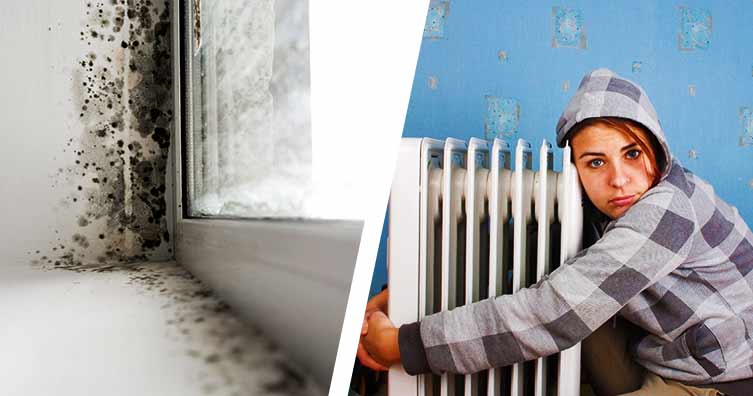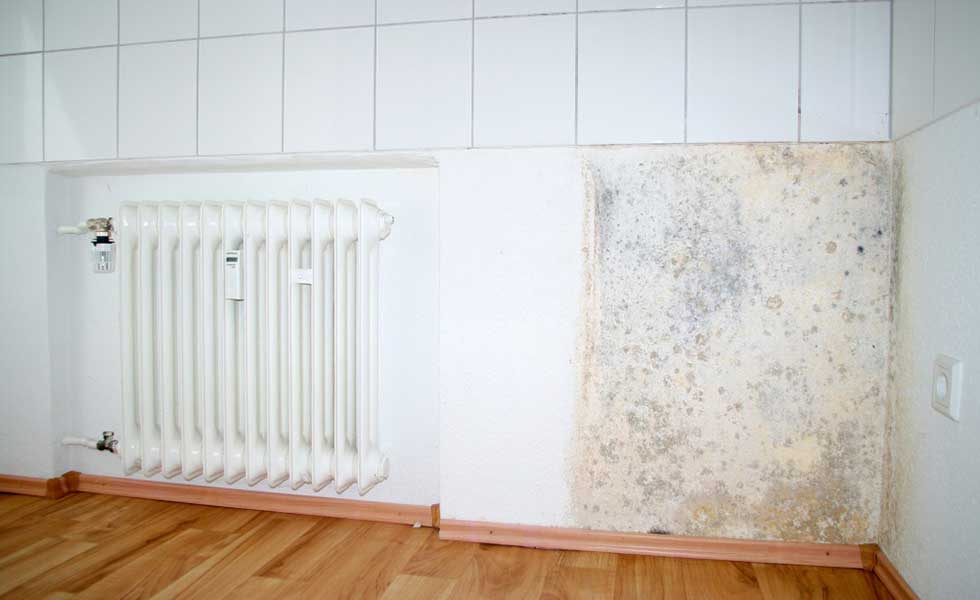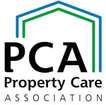
As a landlord, one of the issues you may face is that the property you own has a damp or mould problem. Damp is one of the more common issues to affect homes and even newer property can experience it. But who is responsible for what between the landlord and tenant?
What is damp?
Damp is a general name given to a series of conditions that are feature some similarities – mainly that there is too much moisture or water in the house and associated conditions such as black mould have been able to grow. There are three main types of damp and many variations.
Condensation is the most common and happens when there is lots of warm moist air and not enough ventilation to get it out of the house – so it releases onto walls and furniture and makes them wet. The warm moist air comes from things like cooking on the hob or showers and if there aren’t fans to remove the air, it lets the water go elsewhere in the house, usually the colder rooms. Basements and cellars are particularly prone to this kind of damp problems.
Rising damp is where water is absorbed through brickwork and the damp proof course fails to stop it – or there isn’t one present. A damp proof course acts as a barrier to stop water from being absorbed into internal areas. But not all homes have it or they can fail in some situations and no longer block the movement of water.
Penetrating damp is where water gets through a weak spot such as a broken roof tile and builds up. Guttering is also another classic cause of a penetrating damp problem but also leaking pipes can lead to this kind of issue. Whereas rising damp typically comes up from the floor, penetrating damp is most common on the roof or ceiling areas of a room or in the loft.
In all of these situations, issues like black mould, mildew and even dry rot can follow.
Who is responsible for damp – landlord or tenant?
As a landlord, there’s a lot of confusion about who is responsible for damp problems and a lot of this comes from the misunderstanding of damp itself. Damp isn’t one single condition with one single cause so the best way to look at who is responsible is to understand the type of damp and what has caused it.
Condensation is the type of damp that causes the most problems because it is often caused by the lifestyle of the tenant. Cooking and using the shower creates that warm moist air and if windows aren’t opened or extractor fans used, then this can build up and lead to condensation problems. However, if there aren’t the right means to ventilate the property, there is some confusion over whose fault that is.
With rising damp and penetrating damp, there is more likely to be a physical cause relating to the house itself as opposed to something that the tenant is doing inside it. These may be due to poor maintenance but more commonly, something has broken or been damaged that has allowed the condition to begin. Broken roof tiles in a storm is a perfect example – it is no-one’s fault but simply a side effect of the bad weather. But this weakness can let damp in.

How does the Landlord and Tenant Act 1985 affect damp?
It is a good idea for landlords to take responsibility for damp and put measures in place. It can also be viewed as a requirement under the ‘repairing obligations’ that are set out in Section 11 of the Landlord and Tenant Act 1985.
The act states that the ‘structure and exterior of the house’ as well as ‘supply of water, gas and electricity and heating and heating water’ all need to be kept in working order. Both rising and penetrating damp are structural issues, and these would then come under this definition. With condensation, if mould forms this then also becomes a structural issue and if there is a clear lack of ventilation, this is harmful to the tenant.
Landlord responsibilities for damp
There is a clear responsibility for a landlord whose property has damp to make sure a correct diagnosis is obtaining, and that treatment is taken if it is their clear responsibility as shown above. Damp comes under the Housing Health and Safety Rating System or HHSRS where is a mandatory repair and must be handled to ensure tenants can live in the property safely.
Landlord responsibilities for mould problems
If the damp problem has reached the point where mould has grown, there is an emphasis on the landlord to deal with this – and quickly. Landlords have a responsibility to ensure that the property doesn’t affect the physical and mental health of a tenant and mould can definitely affect one and sometimes the other.
Mould is responsible for a range of health problems and can aggravate existing conditions such as asthma or breathing problems. It can even cause problems for people receiving cancer treatment. Under the HHSRS rules, landlords need to take actions to correct any condition that can have any health effects, especially serious ones like mould.
What repairs does a landlord need to do?
It is always best to lay out in the tenancy agreement what the responsibilities are for both parties. For example, a landlord cannot be responsible for dealing with a damp problem unless the tenant informs him that there is one. So there needs to be an emphasis on the tenant to notify immediately when they notice any signs of damp or other problems.
For tenancies that started after October 1st, 2015, the landlord has a legal obligation to respond to the report from the tenant within 14 days. They also need to state in writing what they are doing, and the time frames involved.
If the landlord doesn’t do this, the tenant can go to the local authority who can issue a notice to deal with the damp problem. Under the new Retaliatory Eviction and the Deregulation Act 2015, a landlord cannot then try to evict the tenant within six months of the reporting of the problem. If the problem isn’t fixed, the landlord may also have trouble enforcing Section 21 notices.
What preventative steps are required?
It is always best to prevent damp from occurring then there’s no question over who has to deal with the problem. There are several steps to take to help with this.
Making sure that the property has good ventilation is an important point. This means extractors fans in kitchens and bathrooms and windows that open properly and can open enough to let the moist air out but not all the heat.
It is also worth regularly inspecting the outside of the property to look for problems that could lead to damp. Checking guttering is one example as broken or blocked gutters often lead to penetrating damp problems. Looking at the damp proof course and spotting signs it may not be working is also important.
Educating the tenant on the signs of damp is also worth doing so they know when something serious occurs and that they need to get in touch with the landlord urgently. Some of the classic signs of damp include:
Musty ‘damp’ smells
Walls or floors that feel slightly wet when touched
Damp, peeling or water-stained wallpaper
Water stains in lower corners (rising damp) or higher areas (penetrating damp)
Lots of drops of water on windows
Spots of black mould or mildew growing on walls, ceilings or even furniture
By having some idea of what these problems look like, the tenant is better placed to spot the signs and notify the landlord quickly.

Does insurance cover damp?
Generally, damp is considered a maintenance issue and therefore it is down to the landlord and the tenant to rectify rather than the insurance company. Also if the problem is due to work that has been varied out incorrectly or hasn’t been done, then this also falls under the maintenance area and won’t be covered under insurance.
There are some situations where insurance companies may consider paying out towards damp problems. For example, if the penetrating damp has been due to the ingress of water from a storm, flood or damaged drains or pipes, then this may be covered. It would depend on the exact details and the insurer involved.
Damp – a common problem
There’s no doubt that damp is a common problem – one survey of 4500 tenants by YouGov found that almost half said they had lived in a property that had damp or mould within the last 12 months. As a landlord, there is a clear responsibility to ensure that your property isn’t one of these.
The best solution is to involve a damp expert, like us at Tapco HomeDry, to look at the problem and suggest the best possible outcome. By working with a damp expert and getting a clear picture of what has happened, the landlord is best able to understand their responsibilities and make sure they are fulfilling their legal obligations to their tenants.


 Damp Proofing
Damp Proofing Basement Damp Proofing
Basement Damp Proofing Water Damage
Water Damage Condensation Control
Condensation Control Dry Rot Treatment
Dry Rot Treatment WOODWORM & WET ROT
WOODWORM & WET ROT CAVITY Wall Ties
CAVITY Wall Ties Property Maintenance
Property Maintenance Waterproofing And Tanking
Waterproofing And Tanking Structural Repairs
Structural Repairs







